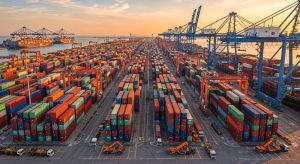Breaking into New Markets: Key Factors to Consider When Sourcing from India
India has emerged as a compelling alternative to traditional sourcing destinations like China, offering diverse manufacturing capabilities, competitive costs, and a rapidly improving infrastructure. For companies looking to diversify their supply chains and capitalize on India’s growing role in global trade, understanding the market dynamics is essential.
In this article, we explore the advantages and challenges of sourcing from India, as well as the industries driving its growth as a global sourcing hub.
Why Consider India for Sourcing?
1. Competitive Cost Advantages
India’s manufacturing costs are often lower than in other countries due to:
- Affordable Labor: India has one of the largest and youngest workforces in the world, offering significant labor cost savings.
- Government Incentives: Initiatives like “Make in India” encourage manufacturing through tax breaks, subsidies, and streamlined processes.
2. Diverse Manufacturing Capabilities
India’s industrial base spans various sectors, including:
- Textiles and Apparel: India is a global leader in textile production, offering high-quality fabrics and garments.
- Automotive Components: India is one of the top suppliers of automotive parts, catering to global brands.
- Pharmaceuticals: With advanced R&D capabilities, India is a key player in the pharmaceutical and healthcare industries.
- Engineering Goods: The country excels in manufacturing machinery, tools, and heavy equipment.
3. Strategic Location and Trade Agreements
India’s proximity to key markets in Asia, the Middle East, and Europe, combined with its participation in trade agreements, makes it a strategic hub for global sourcing.
Related Reading: India as an Alternative to China for Sourcing
Challenges to Navigate
While India offers immense opportunities, there are challenges to be aware of:
1. Infrastructure Development
- Challenge: While improving, India’s infrastructure can still lag behind other sourcing hubs in logistics and supply chain efficiency.
- Solution: Work with experienced partners who can navigate local logistics complexities.
2. Regulatory Environment
- Challenge: India’s regulatory landscape can be complex, with varying rules across states.
- Solution: Engage sourcing specialists familiar with India’s legal and regulatory framework.
3. Cultural and Communication Barriers
- Challenge: Differences in business practices and language can create misunderstandings.
- Solution: Build strong relationships with suppliers and invest in regular communication and cultural training.
How to Succeed in Sourcing from India
1. Choose the Right Supplier
Thoroughly vet suppliers for:
- Manufacturing capabilities
- Compliance with global standards
- Track record in quality and delivery
2. Establish Clear Expectations
Provide detailed specifications, timelines, and quality standards to minimize ambiguities.
3. Invest in Quality Control
Regular audits, pre-shipment inspections, and testing are crucial to maintaining consistent quality.
4. Partner with Experts
Collaborating with experienced sourcing partners like EDS International ensures a seamless sourcing experience, from supplier selection to final product delivery.
Conclusion: India – A Rising Sourcing Powerhouse
India’s growing capabilities, cost advantages, and industrial diversity make it an attractive sourcing destination for companies seeking to break into new markets. While challenges exist, a strategic approach and the right partners can unlock tremendous opportunities.
At EDS International, we specialize in helping businesses navigate new sourcing destinations like India and diversify their supply chain. Our expertise ensures that you can leverage India’s potential while mitigating risks and overcoming challenges.
Contact us today to learn how we can support your global sourcing needs.








